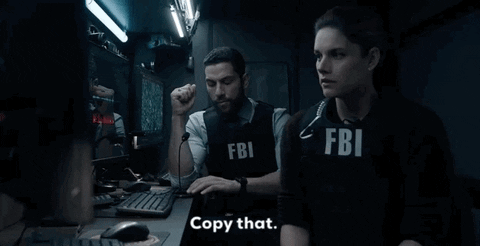Goddammit.
I knew it.
I knew I had no idea about Conversion Rate Optimization.
I already wrote about my ignorance in a previous article, where I talked about the day I realized that (In my very first hours of doing the “Conversion Optimization Minidegree” by CXL).
And right now, after finishing my 2nd straight week of the training, I still feel like that. That I only knew a surface theory of how website optimization works. And that I just began getting a glimpse of the depth of this vast field.
So, even though I might be wise from Socrates’ point of view… I think I’m starting to see the light at the end of this long tunnel and I want to talk about a chapter of the CXL Minidegree that opened my eyes and made my jaw drop multiple times.
That chapter is all about “Product Messaging”, and is taught by Momoko Price.
“Product messaging” or “How to nail your website copy and convert like crazy”
First, let’s all agree that good copywriting is vital for the sales of a website. OK?
Thank you.
Now that we’re on the same page, let me tell you that there IS a way to write a good copy. There IS a way to present your product in a way that will result in big sales.
And as it turns out, you don’t even have to be a “talented copywriter” or a “creative genius”.
There is a method. And this article will talk about this method.
How to write bad copy, like 99.4% of websites out there
Sometimes learning just what to avoid will get you halfway to your goal. So let’s examine how 99% of the websites out there write their copy, so that you understand what we are NOT aiming towards:
Opinions
You are the owner of a website.
You start writing the website copy.
You are struggling, so you assign it to a member of your team who knows the product and your business very well.
He finishes it.
You disagree on some points.
Corrections are made.
You agree.
Then you get the opinion of the senior members of your team.
They find other points of optimization.
You change it again.
Everybody has different opinions.
All opinions kinda make sense.
Nobody can quite justify why their opinion is “the best”.
And you end up with a Frankenstein monster of a copy that doesn’t convert.
What went wrong here?
Inspiration and luck
Sometimes good copy is written, indeed. You have a really good copywriter who is connected with the product and the market, and can understand what sells and what doesn’t. Maybe, on top of that she slept early the previous day, woke up fresh and had awesome morning sex with her new boyfriend. On her way to work she found no traffic and on her arrival her co-worker had already ordered coffee for her. She started writing feeling totally inspired.
If you were her boss, would you bet that this would happen every day?
Stealing
…or else, the “quick n’ dirty” way.
Go to your competitor’s page and start scraping content. Copy the layout. Copy text. Copy colors. Copy everything and change it ever so slightly, so that nobody notices.

But for God’s sake, don’t do anything original.
Don’t make yourself stand out. Don’t create! Be a copycat, and then wonder why your “customers” are converting only in competing websites.
Now that you know what to run away from, let’s cut to the chase.
How to beat 99,4% of websites and write research-driven copy that converts — A step-by-step process
Assess your existing copy
Before you do anything radical with your page copy, the first thing you need to do is to assess it. What is good? What is bad? What needs to go?
Once you identify and quantify everything, you’ll be able to prioritize the needed changes.
But how do you do that?
You do that by setting your subjective opinions aside, applying a simple framework and grading you copy against roughly the following questions:
- Does it address customers’ motivations?
- Does it clearly communicate your Unique Selling Point?
- Does it cause friction or anxiety in some way?
- Does it give incentive to buy?
- Does it follow the principles of persuasion of R. Cialdini (one of my favourite non-fiction books of all time)
- Is it specific?
- Does it say everything that needs to be said?
- Is it about YOU or about THEM?
The teardown can get much deeper than that but if you answer those questions for your page, you’ve already done more than most of the websites out there.
“Mine” copy from your customers
The well-kept secret of good copywriters is that you don’t need to be a creative genius to write copy that converts. You just have to “listen” to what your ideal customers say, and say it back to them.

That involves qualitative and quantitative research:
- Start by making a list of keywords (eg. your products)
- Search for reviews and testimonials a) in Google, b) in competitive websites & social media and c) in your website and social media
- Ask them directly by creating a surveys or conducting 1-on-1 interviews
- Find the common patterns and organize the messages in clusters
- Categorize and rank them
What you’ll end up with is first of all a ton of new insights on what customers are looking for. And as a (BIG) bonus you’ll get a bunch of very specific quotes, expressions and statements that you’d never think of yourself and that you can now use to add “color” and “personality” to your copy, making it more specific and more relatable.
Craft an effective Unique Selling Point
“Unique Selling Point” or “USP”.
Or, to put it differently, the answer to the question: “what sets you apart from competition”. Or “Why should I buy from you specifically?”
Your USP is the intersection between “What your customer wants”, “what your product offers” and “what is unique about you”.
Bad news is… it is really hard to get it right
Good news is… if you have done your research right, you already have the answer. You just have to dig deep and analyze your data. The process suggested by the course is so thorough that it seems almost impossible to get it wrong.
Structure the flow of your page copy
Message hierarchy is big!
You should have in mind that 1) people think in terms of stories and 2) people many times scan rather than read online.
Thus said, your copy should be structured in a way that:
- It tells a clear story with a beginning a middle and an end (Usually the “end” is the Call To Action)
- It makes it visually clear to find the most important elements of the story.
An example of this could be a page that:
- Starts with the USP
- Addresses the client motivations (goals, fears, pains)
- Explains the value of the solution that we offer, connecting it to their motivations
- Reassures customers and removes potential anxieties and doubts for my products
- Ends with a prompt to act now
Write your first draft
You already did the work. Now put it on “paper”. That should be the easiest part of the process.
Make edits
We’re almost finished.
Editing your copy is where good copy can become legendary copy. There is a handy checklist for that:
- Make everything clear and cut anything that is not absolutely necessary. That way you could reduce copy by 20%-30% and also increase clarity.
- Use quantifiable proof for any claim that you make
- Don’t be implicit. You don’t want your visitor to think. It’s not a novel. It’s a sales page! So, say everything explicitly and don’t underestimate the unwillingness of your customer to think.
- Paint a picture with your copy. Replace generic words with specific ones. Make your customers imagine specific scenarios and as they read. Use specific adjectives, talk about colors, feelings, images and sensations. Describe to them specific situations. Use your message mining research! It should be full of specific language. Did I just use the word “specific” 5 times in a small paragraph?
Create your page mockup
Writing copy is finished. Now you have to make sure it is presented in a visually appealing way that follows web design rules. We could get into bigger depths with that, but that would be another (huge) article altogether.
For now, we have more than enough to start creating 🙂

